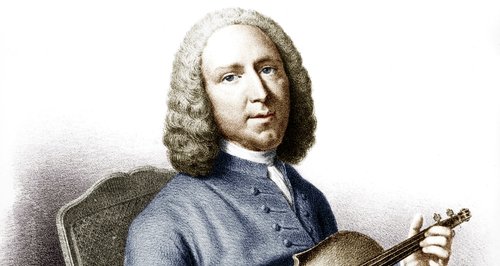Jean-Philippe Rameau
One of the most influential theoretical works ever written is his Traide de l'harmonie (Treaty on Harmony).
He coined the words tonic (the center of tonality, the note you go home to/want to go home to), subdominant (5th below tonic), and dominant (5th above tonic), and that these three were the pillars of tonality.
Rameau considered the triad and seventh chord primal elements of music, and derived both from the natural consonances of the perfect 5th, major third, and minor third.
He said dissonances create tension, while consonances are resolutions, and that music was driven forward by dissonance and came to rest in consonance.
He grounded the practice of harmony in the laws of acoustics (something to credit Descartes for).
Rameau approached each chord to have a fundamental tone, equivalent to today's "root"/the lowest note when the chord is arranged in a series of thirds. In a series of chords, the succession of these fundamental tones is the fundamental bass.
Rameau asserted that a chord keeps its identity even throughout all its inversions, and that the harmony of a passage is defined by the root progression rather than the lowest sounding note.
Rameau recognized that piece could change key, a process called modulation, but considered that each piece had one principal tonic to which other keys were secondary.
Most of the elements had been described by earlier theorists, but Rameau was the first to bring them together into a unified system.
Rameau's theories make up most of the theories taught today.
Antonio Vivaldi's ritornello style can be best understood in this video:
The ritornello is the recurring phrase/main idea/theme in a piece. It's important to note that it is recurring. The episode is like an ornament or different story in between the ritornellos. The tutti is a section where the instruments are played altogether. Vivaldi was able to create lengthy pieces in a short time just by reusing and modifying the ritornello.

No comments:
Post a Comment